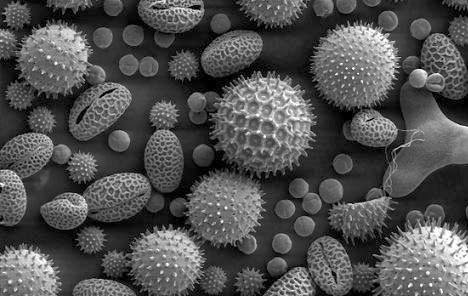Abominable Mystery of Flowering Plants Gets Worse
Charles Darwin summed up the baffling problem of the appearance of flowering plants as an "abominable mystery". Simply put, evolutionists cannot figure out how they evolved, they just appeared suddenly, and with great diversity. No way did dinosaurs stop and smell the flowers. Or did they?
Flowers are tricky to fossilize because of their delicate nature, but pollen is plentiful. Unfortunately for evolutionists, pollen has been found in "older" rock layers. This is not a problem for biblical creationists who do not have evolutionary "timeline" presuppositions. Actually, it supports the Genesis Flood models.
 |
| Image credit: NASA/Earth Observatory |
Evolutionists have long been puzzled about how flowers could diversify to fill the earth so rapidly after they evolved. From their Early Cretaceous appearance 130–140 million years ago, evolutionary interpretation of the fossil record concludes they rapidly diversified to dominate the botanical world by 90 million years ago. Furthermore, though generally thought to have evolved from extinct gymnosperms (plants like conifers with “naked” unenclosed seeds), neither the fossil record nor molecular clock dating has provided any consensus about the “hows” and “whens” of floral evolutionary ancestry.
You can read the rest of "Pollen Places Floral Roots Deeper in the Fossil Record" in context, here.
Writing in Frontiers in Plant Science, the researchers report that molecular clock predictions about the timing of floral evolution vary greatly. Estimates point to origins much earlier (275 mya) than the "new" pollen-based time, much later (147 mya), and many possibilities in between. Molecular clock dating is ordinarily calibrated in accordance with the fossil record—a source of much circular reasoning, incidentally — but the scarcity of floral fossils has rendered clocking flowers a difficult proposition.